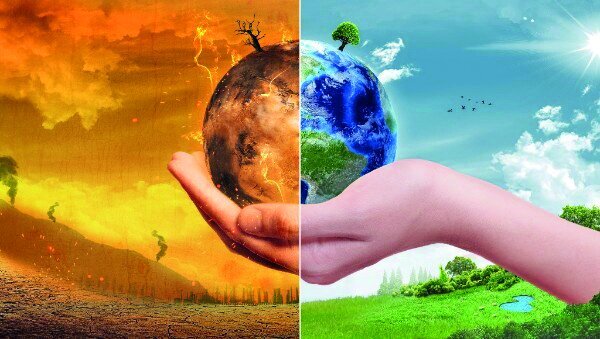National plan needed to tackle climate change

TEHRAN- A national plan including resource management is needed to deal with the consequences of climate change, Sahar Tajbakhsh, the head of the Iran Metrological Organization, has said.
“Today, climate change is known as a security issue in the world and everyone is aware of the effects and hazards posed by that,” she added, IRNA reported.
The official emphasized the need for launching action plans by all countries across the world to reduce greenhouse gases.
“Countries with poor infrastructure are more vulnerable to consequences of rising temperature such as power outages and droughts.”
Tajbakhsh went on to say that it requires global understanding and management to moderate the effects of climate change.
“A practical plan to reduce greenhouse gases should be drawn up for all countries within a geographical region,” she said, adding that Iran also needs a national plan to manage the issue in various areas.
Elsewhere in his remarks, Tajbakhsh said management of water resources should be based on climate change and the use of renewable sources of energy should be on the agenda.
“Unstable infrastructure and land use change are the main causes of numerous floods following torrential rains.”
She referred to dust storms as one of the consequences of drought, saying: “Climate change may increase wind speed in some areas, intensifying dust storms.”
“For this reason, the World Meteorological Organization emphasizes the need to set up impact-based systems in which weather forecasts can tell in detail what the consequences of an atmospheric phenomenon are in each region.”
“Data-driven information should be collected and integrated. It requires an increase in the number of radars and up-to-date meteorological equipment to monitor information,” Tajbakhsh concluded.
Iran vulnerable to climate change
According to a report by the World Health Organization (WHO), Iran is amongst the most vulnerable countries to climate change due to its geographic, economic, and climatic characteristics.
For instance, a large area of the country is susceptible to floods, while changing trends in precipitation have also led to droughts and forest fires.
Climate change increases the intensity and frequency of extreme weather events including drought and floods.
Rising sea levels can lead to storm surges, coastal erosion, saltwater intrusion of groundwater aquifers, and ecosystem disruption.
These events can lead to population displacement and affect water and sanitation infrastructure and services, contaminating water with fecal bacteria (e.g. E. coli, salmonella) from runoff or sewer overflow.
Increasing temperatures and precipitation can also lead to water contaminated with Vibrio bacteria or algae blooms.
Water resources are expected to be less reliable in the future in Iran, with an observed 50 percent decrease in surface runoff and flood occurrence potentially increasing by around 52 percent.
Climate change will worsen such trends. By 2030, there is a projected further 25 percent decrease in surface water runoff in Iran.
In November 2022, WHO representative to Iran, Jaffar Hussain, said Iran's studies on climate change are among the most reliable in the world.
The government of Iran, in cooperation with us and UNIDO, is carrying out a joint project about the results of weather and climate change in the field of health, which fortunately has made good progress so far, Hussain further stated.
MT/MG
